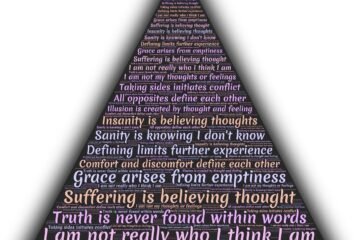
Click below to listen to this article:
Self introspection
Self-introspection is the process of examining one’s own thoughts, feelings, actions, and motivations. It can help us to understand ourselves better, to identify our strengths and weaknesses, to improve our performance and well-being, and to align our values and goals with our actions. In this article, we will provide an introduction to self-introspection, explain why it is important, and offer some practical tips on how to practice it effectively.
Introspection methods
Self-introspection is the process of examining one’s own thoughts, feelings, and actions in order to gain a deeper understanding of oneself. This can help people to identify their strengths and weaknesses, to recognize their patterns and habits, and to evaluate their goals and values. It can also help people to cope with challenges, to improve their relationships, and to enhance their well-being.
There are different methods of self-introspection, such as journaling, meditation, therapy, feedback, and personality tests. Each method has its own benefits and limitations, depending on the purpose and context of the self-introspection. Some common steps of self-introspection are:
- Setting a clear intention for what you want to learn or achieve from the self-introspection
- Choosing a suitable method and time for the self-introspection
- Being honest and open-minded with yourself
- Asking yourself relevant questions and listening to your inner voice
- Reflecting on your thoughts, feelings, and actions and how they affect yourself and others
- Identifying areas of improvement or change
- Making a plan and taking action to implement the change
- Reviewing your progress and adjusting your plan as needed
Self-introspection is not always easy or comfortable, but it can be rewarding and beneficial for personal growth and development. Self-introspection can help you to become more aware, authentic, and confident in yourself.
Tools and techniques of self-introspection
Self-introspection can be done in various ways, such as keeping a journal, meditating, asking for feedback, taking personality tests, or using cognitive techniques.
Some of the methods and techniques of self-introspection are:
- Journaling: Writing down one’s thoughts and feelings on a regular basis can help one to reflect on one’s experiences, emotions, goals, challenges, and achievements. Journaling can also help one to identify patterns, strengths, weaknesses, and areas for improvement.
- Meditation: Practising mindfulness meditation can help one to focus on the present moment and observe one’s thoughts and sensations without judgment. Meditation can also help one to cultivate awareness, calmness, compassion, and acceptance.
- Feedback: Seeking feedback from others can help one to gain a different perspective on one’s self and one’s actions. It can also help one to recognize one’s blind spots, biases, and assumptions. Feedback can be obtained from friends, family, mentors, coaches, or professionals.
- Personality tests: Taking personality tests can help one to learn more about one’s traits, preferences, motivations, and values. Personality tests can also help one to understand how one relates to others and how others perceive one. These tests can be based on various theories and models, such as the Myers-Briggs Type Indicator (MBTI), the Big Five Personality Traits (OCEAN), or the Enneagram.
- Cognitive techniques: Using cognitive techniques can help one to challenge and change one’s negative or irrational thoughts and beliefs. Cognitive techniques can also help one to develop more positive and realistic thinking patterns. These techniques can be based on various approaches, such as cognitive behavioural therapy (CBT), rational emotive behaviour therapy (REBT), or positive psychology.
Benefits
Some of the benefits of self-introspection are:
- Can help one identify their strengths and weaknesses, and work on improving them.
- Also, it can help one understand their emotions and motivations, and manage them better.
- Helps one develop self-awareness and self-confidence, and enhance their self-esteem.
- Self introspection can help one learn from their mistakes and successes, and make better decisions in the future.
- Additionally, it can help one align their values and goals, and pursue them with passion and purpose.
Self-introspection example
One self introspection technique that can help people improve their personal and professional lives is the SWOT analysis. SWOT stands for strengths, weaknesses, opportunities and threats. It is a simple but powerful tool that allows people to identify their internal and external factors that affect their goals and performance.
For example, a person who wants to start a new business can use the SWOT analysis to assess their current situation and plan their future actions. They can list their strengths, such as skills, experience, network, etc., and their weaknesses, such as lack of capital, knowledge gaps, competition, etc. They can also list the opportunities, such as market trends, customer needs, partnerships, etc., and the threats, such as legal issues, economic downturns, new entrants, etc.
By doing this, they can gain a clear picture of their current position and potential challenges. They can then use this information to devise strategies that leverage their strengths and opportunities, and overcome or minimize their weaknesses and threats. This way, they can increase their chances of success and avoid possible pitfalls. The SWOT analysis is an example of a self introspection technique that can help people achieve positive outcomes in various aspects of their lives.
Further information
If you are interested in learning more about self-introspection and how to practice it effectively, here are some websites that provide help and advice:
Verywell Mind: This website offers a comprehensive overview of what introspection is, how it is used in psychology research, what are its benefits and drawbacks, and some examples of introspection. It also provides tips on how to be more introspective and self-reflective.
Positive Psychology: This website provides 87 self-reflection questions that can help you practice introspection and gain insight into your thoughts, feelings, values, goals, strengths, weaknesses, and more. It also offers 10 self-reflection exercises, activities, and techniques that you can use to enhance your introspection skills.
Mental Cure It: This website explains the definition of self-introspection, how to do it, why it is important, and some simple tricks to make it easier. It also suggests some books and podcasts that can help you with self-introspection.
Mantra Care: This website describes what introspection is, how it helps in self-development, what are the benefits of introspection, and how to do it effectively. It also offers online counselling services that can help you with introspection and other mental health issues.
Medium: This website features an article that outlines four simple introspection steps that can boost your self-awareness and help you achieve your goals. It also explains the difference between introspection and self-reflection, and how to use both in your daily life.




0 Comments